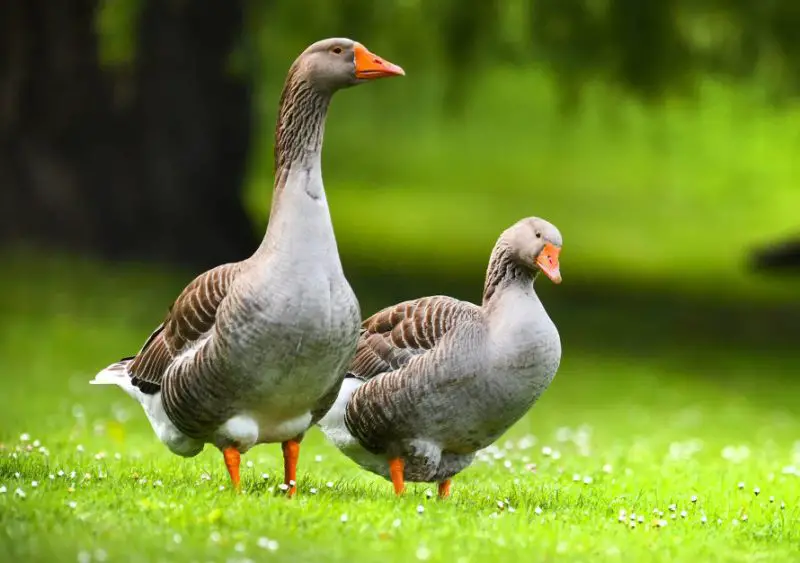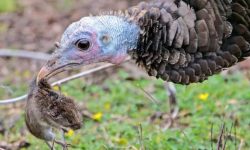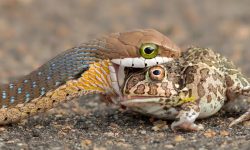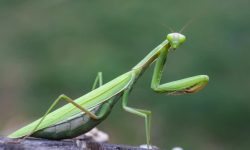Geese are beautiful, intelligent, and social birds found across lakes, rivers, wetlands, and farmlands around the world. Known for their loud honking and V-shaped flight formations, geese are also fascinating when it comes to their diet. But what exactly do geese eat?
The answer depends on their environment, age, and even the season. Geese are omnivorous, meaning they eat both plants and small animals, though the majority of their diet comes from vegetation. From tender grasses to aquatic plants, grains, and even insects, their food choices help them stay strong, energetic, and ready for long migrations.
In this comprehensive guide, we’ll explore 20 foods geese love the most — from their natural wild diet to the foods domestic geese enjoy. You’ll learn what keeps these graceful birds healthy and thriving, whether in the wild, on farms, or in backyard ponds.
Understanding What Geese Eat

Geese Are Omnivores — But Mostly Herbivores
While geese technically qualify as omnivores, about 90% of their diet consists of plant material. They graze like cows, nibbling on grasses and clovers, and often forage for seeds and grains.
However, during nesting or molting seasons, geese may eat small insects, worms, and even snails to increase their protein intake. This helps them grow new feathers and recover strength after migration.
How Geese Find Food
Geese are natural foragers. They use their strong beaks to graze on land or filter food from shallow water. Their serrated bills allow them to grasp slippery aquatic plants and uproot grass easily.
In agricultural areas, they often feast on leftover crops like corn, wheat, and rice, which provide excellent energy before migration.
Diet Differences Between Wild and Domestic Geese
-
Wild geese eat mainly natural vegetation, aquatic plants, and seasonal fruits.
-
Domestic geese have a more controlled diet — usually a mix of grasses, grains, vegetables, and formulated feed for balanced nutrition.
Despite the differences, both types require fiber, protein, and minerals to maintain good health and strong flight muscles.
20 Foods Geese Love the Most
1. Grass
Grass is the most important part of a goose’s diet. They graze for hours on tender green shoots, clovers, and meadow grasses.
Grasses are rich in fiber and vitamins that support digestion and feather growth. Wild geese especially prefer young grass blades found near ponds and riverbanks.
In domestic settings, geese can thrive in pastures or lawns with plenty of fresh, chemical-free grass.
2. Clover
Clover is a goose favorite. It’s soft, easy to graze, and rich in calcium and protein, making it ideal for breeding females and goslings.
Clover grows abundantly in meadows and lawns, and geese naturally seek it out during grazing. It also supports strong eggshell formation and muscle development.
Many farmers intentionally plant clover patches for grazing geese to maintain healthy growth and fertility.
3. Aquatic Plants
Geese spend much of their time around water, where they feed on aquatic vegetation like pondweed, water lilies, duckweed, and algae.
These plants provide hydration, vitamins, and minerals that help maintain plumage and skin health. Aquatic plants also supply small invertebrates for added protein.
By feeding on pond plants, geese help control algae and keep aquatic ecosystems balanced.
4. Seeds
Seeds are a natural energy source for wild geese, especially before migration. They forage on grass seeds, sedges, and wild grains found in fields and marshes.
Seeds are packed with fats, carbohydrates, and protein that support stamina during long flights.
Farmers often notice geese feeding in harvested fields to collect leftover seeds — a behavior that helps them fatten up before winter.
5. Grains (Corn, Wheat, Barley, Rice)
Grains form a large portion of both wild and domestic geese diets. They love corn, wheat, barley, and rice, especially during harvest seasons.
Grains provide dense calories, perfect for geese that need to store fat for migration or cold weather.
Domesticated geese often receive cracked corn or mixed grains as feed supplements, ensuring they get balanced nutrition year-round.
6. Roots and Tubers
Geese sometimes dig shallowly in the soil to find roots and tubers, especially when surface vegetation is scarce. They eat plant roots like water lilies, cattails, and even potato-like tubers.
These underground foods are rich in starch and minerals, giving geese energy for flight and migration.
In wetland areas, roots make up an important part of their winter diet when grass is less available.
7. Vegetables
Domestic geese enjoy a wide variety of vegetables such as lettuce, spinach, kale, carrots, and cabbage. These greens are easy to digest and full of essential nutrients.
Vegetables help geese maintain vibrant plumage, boost immunity, and stay hydrated. However, starchy vegetables like potatoes should be fed sparingly to prevent obesity.
Offering chopped vegetables is a great way to diversify a pet or farm goose’s diet.
8. Fruits
Geese enjoy fruits in moderation, particularly berries, apples, pears, and melons. These provide natural sugars, antioxidants, and hydration.
In the wild, geese feed on wild berries like blackberries and elderberries during summer and fall. The fruits help them build fat reserves for migration.
Always remove seeds and pits before offering fruit to domestic geese, as some can be toxic in large amounts.
9. Insects
Although primarily plant-eaters, geese occasionally consume insects such as beetles, grasshoppers, and worms.
These protein-rich foods are particularly important for goslings (baby geese) and molting adults, helping with feather growth and tissue repair.
Insects are a natural supplement, especially during the summer when they’re abundant near ponds and fields.
10. Snails and Small Invertebrates
Wild geese sometimes pick up small snails or aquatic invertebrates while feeding on pond plants. These provide calcium and protein for strong bones and eggshells.
This behavior is more common in wetland environments, where aquatic life is plentiful.
While not a primary food, these small creatures make an important addition to the goose diet during breeding seasons.
11. Algae
Algae, often found on ponds and lakes, is a favorite food for many geese. It’s full of vitamins, amino acids, and essential fatty acids.
Geese use their serrated bills to scrape algae off rocks and water surfaces. This also helps keep their environment cleaner and prevents algae overgrowth.
Algae provides hydration and sustains geese in aquatic habitats year-round.
12. Agricultural Crops
In farmlands, geese often forage in leftover crop fields, eating fallen grains, soybeans, and corn.
These rich foods help geese accumulate fat reserves before migration. They also provide essential carbohydrates for energy during winter.
Farmers sometimes manage geese populations through controlled feeding to prevent overgrazing.
13. Weeds
Weeds like dandelion, plantain, and chickweed are readily eaten by geese in pastures and backyards.
These wild greens are nutrient-rich and help with digestion. Weeds also contain natural medicinal properties that promote gut health.
Geese naturally help manage weed growth, acting as eco-friendly lawnmowers for their environment.
14. Flowers
Geese often nibble on flowers and petals, especially those of dandelions, clover, and water lilies.
Flowers offer natural sugars and trace minerals, and their soft texture makes them easy to eat. While not a staple, flowers add variety and flavor to a goose’s diet.
In gardens, it’s common to see geese grazing gently among blooming plants.
15. Nuts and Acorns
In forested areas, wild geese sometimes feed on small nuts, acorns, or fallen seeds. These are rich in fats and protein, helping geese stay warm in colder months.
Acorns, in particular, are a valuable seasonal food source that boosts calorie intake before migration.
Domestic geese can be given crushed or soaked nuts occasionally, but only in small portions.
16. Moss and Lichen
In colder climates or mountainous areas, geese may eat moss and lichen growing on rocks or trees.
These hardy plants provide fiber and minerals when other food sources are covered in snow.
This adaptation allows species like Canada geese to survive in northern habitats during early winter.
17. Duckweed
Duckweed is a tiny floating aquatic plant that geese love to eat. It grows quickly in ponds and is packed with protein and vitamins.
Geese often skim the water surface with their bills to scoop up duckweed, making it a key food in wetland habitats.
Duckweed is also a sustainable, natural food source for domestic geese with access to small ponds.
18. Millet
Millet is a small seed grain that geese find irresistible. It’s commonly used in bird feed mixes and provides carbohydrates and minerals for sustained energy.
Many migratory geese consume wild millet or cultivated varieties in rice fields and wetlands.
Millet is also a safe and nutritious treat for domestic geese.
19. Commercial Goose Feed
Domestic and farm-raised geese often eat commercial feed designed specifically for waterfowl. These pellets contain a balanced mix of protein, vitamins, and minerals.
Commercial feed supports healthy growth, egg production, and feather development. It’s especially important during winter or when fresh vegetation is limited.
Feed should always be provided alongside access to clean water and outdoor grazing.
20. Fresh Water
While not food, fresh water is essential for all geese. They use it for drinking, cleaning, and swallowing food.
Water also plays a key role in digestion — geese often dunk dry food or grass in water before eating it.
Providing clean water sources is critical for both wild and domestic geese to stay healthy and active.
Why Diet Matters for Geese
Health and Energy
A diverse diet provides geese with essential nutrients for flight, migration, and breeding. Carbohydrates from grains fuel their journeys, while proteins from plants and insects repair muscles and feathers.
Ecosystem Impact
Geese play a major role in ecosystems by spreading seeds and pruning vegetation. Their grazing keeps grasslands fertile, while their droppings enrich the soil with organic matter.
Frequently Asked Questions (FAQs)
Do geese eat meat?
Not typically. While they may occasionally eat insects or small aquatic animals, geese are primarily plant-eaters and thrive on vegetation.
Can you feed geese bread?
No. Bread provides little nutrition and can cause health issues like “angel wing.” Instead, offer grains, leafy greens, or chopped vegetables.
What do baby geese (goslings) eat?
Goslings eat soft grasses, small insects, and special starter feed rich in protein to support growth and feather development.
What do geese eat in winter?
In cold seasons, geese eat grains, seeds, roots, and any remaining vegetation. Some migrate south to find open water and green fields.
How much do geese eat per day?
A goose can eat about half a pound to one pound (225–450 g) of food per day, depending on its size and activity level.
Conclusion
Geese are remarkable foragers with diverse and adaptable diets. From tender grasses and aquatic plants to grains and fruits, every meal they eat keeps them healthy, strong, and ready for flight.
Their feeding habits not only sustain their own lives but also shape the landscapes they inhabit — maintaining wetlands, spreading seeds, and balancing ecosystems.
So next time you see a flock of geese grazing or gliding over a pond, remember: their simple meals power one of nature’s most elegant travelers.






